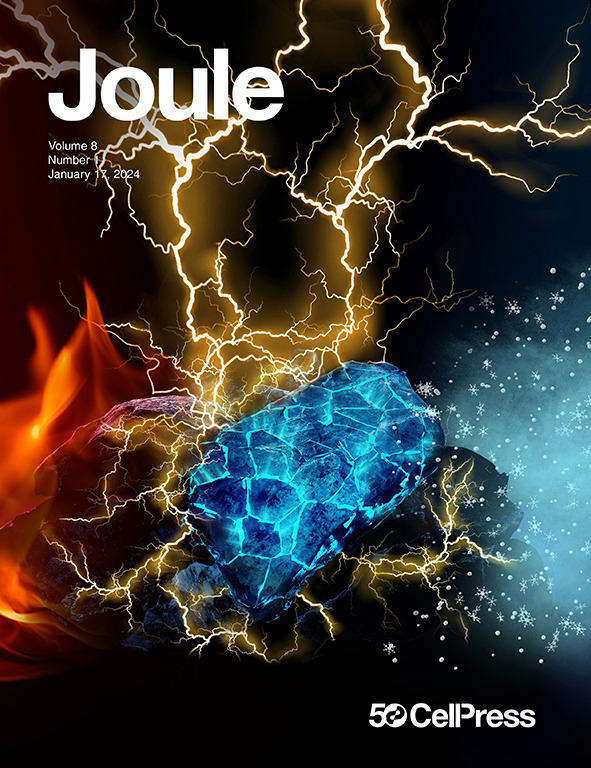Ligand exchange of Li-ion solvation sheath enables balanced electrolytes
IF 38.6
1区 材料科学
Q1 CHEMISTRY, PHYSICAL
引用次数: 0
Abstract
An ideal electrolyte for high-energy, wide-temperature, and safe lithium-ion batteries (LIBs) should simultaneously satisfy the stringent requirements of bulk and interfacial/interphasial properties, which are unfortunately often in conflict with each other. No existing electrolyte design can address such a conflict. Here, we introduce an electrolyte additive that decouples the convoluted relationship based on the bulk and interfacial/interphasial chemistry, which provides a methodology for designing balanced electrolytes in LIBs. The dynamic conversion of the lithium-ion solvation structure enforced by non-solvents in the optimum ethyl methyl sulfone-based electrolyte brings excellent interphasial chemistries and fast ion-transport kinetics, which serve as the foundation for the balanced electrochemical properties. Such an electrolyte enables wide-temperature, highly stable LIBs with a high energy density of 275 Wh kg−1 and high power density of 680 W kg–1 for 3 Ah-pouch cells. This work demonstrates a keen appreciation for interfacial/interphasial chemistry and provides a versatile tool for designing better electrolytes.


锂离子溶解鞘的配体交换实现了平衡电解质
理想的高能、宽温、安全锂离子电池电解质应同时满足体积和界面/相间特性的严格要求,而这两者往往是相互冲突的。没有现有的电解质设计可以解决这样的冲突。在这里,我们介绍了一种电解质添加剂,它可以解耦基于体积和界面/相间化学的复杂关系,这为设计lib中的平衡电解质提供了一种方法。在最佳的甲基磺乙酯基电解质中,非溶剂驱动的锂离子溶剂化结构的动态转化带来了优异的相间化学反应和快速的离子传输动力学,为平衡电化学性能奠定了基础。这种电解质使宽温度、高稳定的锂离子电池具有275 Wh kg - 1的高能量密度和680 W kg - 1的高功率密度。这项工作展示了对界面/相间化学的敏锐欣赏,并为设计更好的电解质提供了一个通用的工具。
本文章由计算机程序翻译,如有差异,请以英文原文为准。
求助全文
约1分钟内获得全文
求助全文
来源期刊

Joule
Energy-General Energy
CiteScore
53.10
自引率
2.00%
发文量
198
期刊介绍:
Joule is a sister journal to Cell that focuses on research, analysis, and ideas related to sustainable energy. It aims to address the global challenge of the need for more sustainable energy solutions. Joule is a forward-looking journal that bridges disciplines and scales of energy research. It connects researchers and analysts working on scientific, technical, economic, policy, and social challenges related to sustainable energy. The journal covers a wide range of energy research, from fundamental laboratory studies on energy conversion and storage to global-level analysis. Joule aims to highlight and amplify the implications, challenges, and opportunities of novel energy research for different groups in the field.
 求助内容:
求助内容: 应助结果提醒方式:
应助结果提醒方式:


